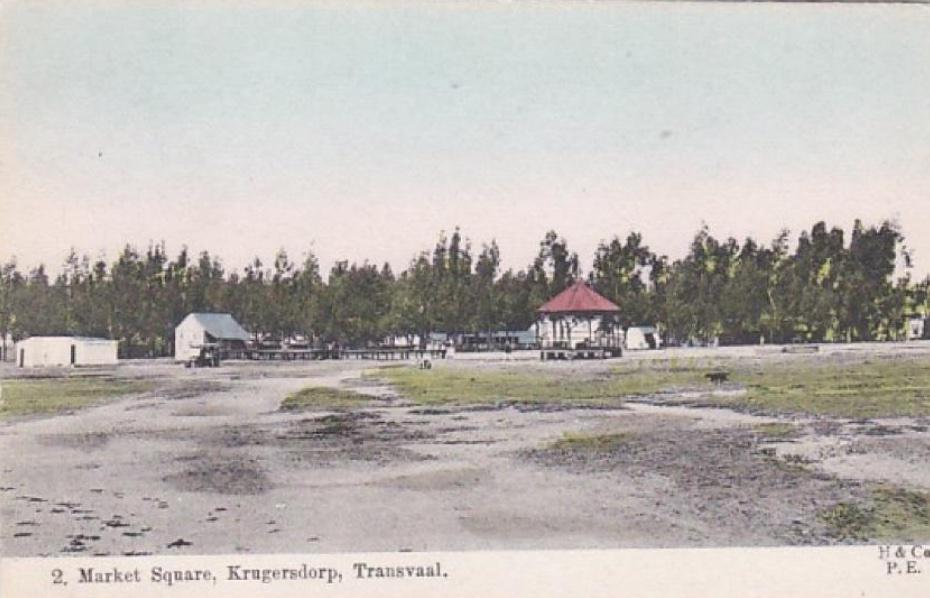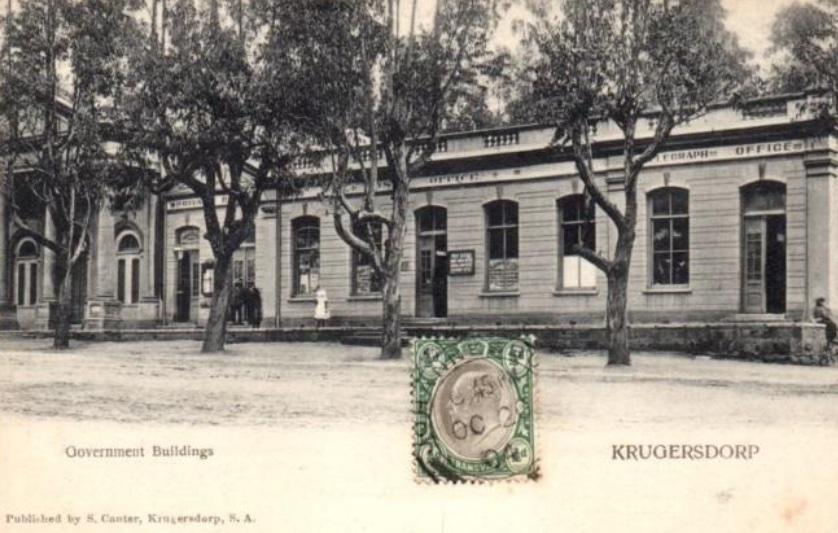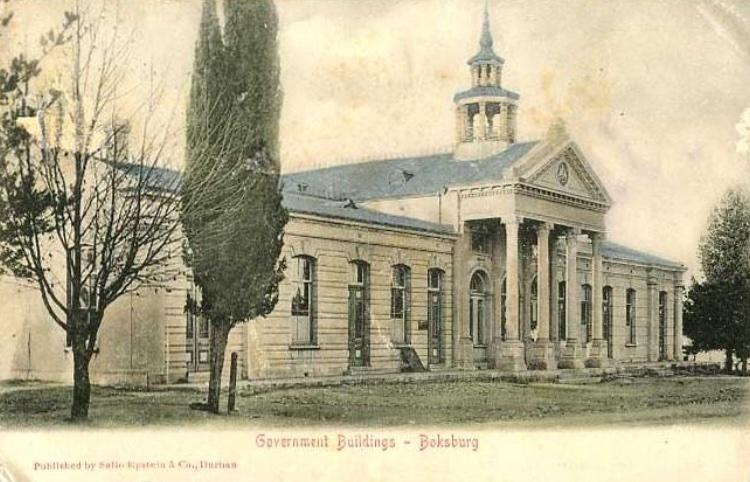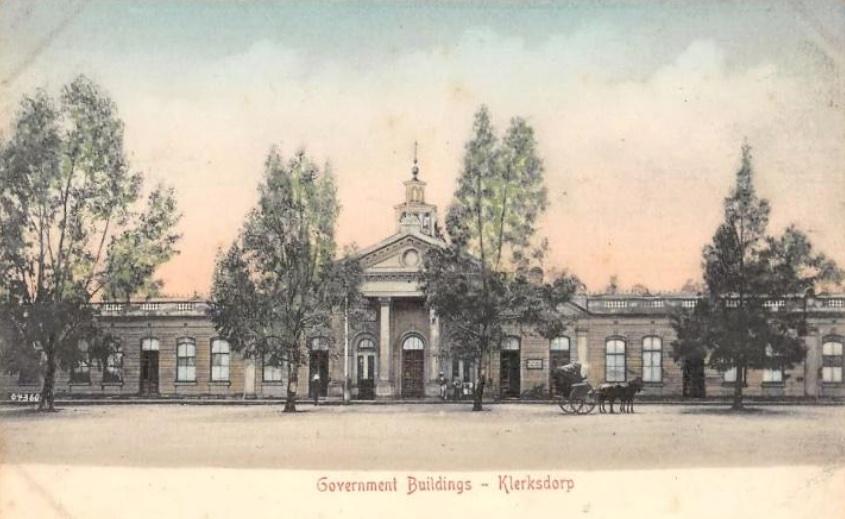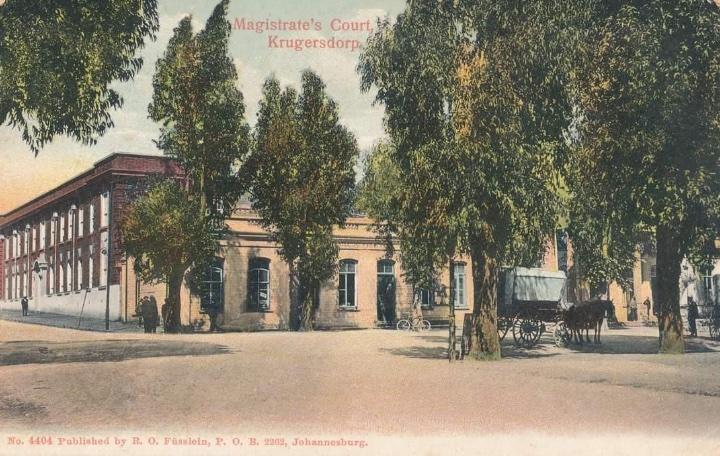
Disclaimer: Any views expressed by individuals and organisations are their own and do not in any way represent the views of The Heritage Portal. If you find any mistakes or historical inaccuracies, please contact the editor.
No other building in Krugersdorp is so closely related to the early history of our town as the one located on Commissioner Street in the CBD. The building houses the newly refurbished Mogale City Museum and is across the street from the Krugersdorp Town Hall.
Krugersdorp was laid out in a manner typical of ZAR (Transvaal) towns all over the old Boer Republic. The Transvaal government aligned itself more closely with continental Europe, where towns are laid out around a central square (we can still see this in Pretoria, where Church Square forms the centre of the capital). Krugersdorp's square was bounded by Commissioner, Market, President and Kruger Streets and was mainly used as the main centre of commerce (another square existed where the sports fields are near President Hyper today.) On the square, one could find a bandstand and a small corrugated iron market building.
Old postcard of Market Square Krugersdorp
As in other towns, the ZAR government kept an entire block of stands for the town's administration to the south of the square, facing Commissioner Street and backed by Ockerse Street. A small corrugated iron building was hastily erected just after gold was discovered in 1887 and the town was proclaimed, to house the magistrate. It was a simple one-storey building with a veranda in front to shield it from the harsh African sun in a place with very few trees in the early days.
During 1889, the government instructed the Department of Public Works, led by Sytze Wierda, to design a building to house all the needed departments. This building was to house a courthouse, magistrate's office, post office and telegraph office.
A long, flat structure designed in the classical architectural style of the Transvaal Republic features a Corinthian entrance and a small tower at its centre. This classical design is echoed in the finishes of the doors and windows.
Old postcard of Krugersdorp Government Buildings
Typical of the Department of Public Works, they produced a plan that could be adapted to any of the towns in the Transvaal after the discovery of gold. Therefore, the same plans or drawings were adapted to Boksburg, Krugersdorp and Klerksdorp. The building in Boksburg, with smaller side wings, had its cornerstone laid on 15 October 1890 by C.J. Joubert, the Head of Mining, and can still be seen on Church Street. The building in Klerksdorp was unfortunately demolished during the 1950s when the municipality built a new civic centre.
Old postcard of Boksburg Government Buildings
Old postcard of Klerksdorp Government Buildings
Our Government Building's cornerstone was laid on 18 September 1890 by President Paul Kruger, and Mr. J.M. Manté oversaw the construction. Building was swift, and Magistrate J.C. Human (after whom Human Street is named) was appointed as the first magistrate. He is credited with initiating the town's tradition of parks and beautification by planting trees starting in 1889.
One notable eucalyptus tree in front of the Magistrate's Building earned the nickname "Death Tree" because the local undertaker, Mr. Bradbury, used to post death notices on it.
The new building looked out over the wide-open Market Square, the corrugated iron houses, shops and hotels being erected, and the hills beyond where the Paardekraal Monument would have been visible.
The building became the focus of the Transvaal for a few hours after Dr. Leander Starr Jameson and his men were captured early on the morning of 2 January 1896 after the nearby Battle of Doornkop. The Government troops brought the captured men to the courthouse and kept them locked up in the cells at the back for the night before transferring them to Pretoria for trial.
The walls of the holding cell located behind the main hall still display graffiti from the time when it housed awaiting-trial prisoners.
In 1973, the building was handed over to the Krugersdorp City Council for conversion into a museum. After a functional restoration in 1994, when most of its original walls and fittings were removed (except for the perfectly restored courtroom), it officially opened its doors on 10 January 1995. Further much-needed refurbishment and restoration took place in October 2024. The museum is currently in the process of completely redesigning its displays. The museum focuses on the diverse people and cultures of Krugersdorp, embodying the belief that "Krugersdorp is the museum."
Born and raised in Krugersdorp, Jaco Mattheyse has deep roots in the region, with his family's history stretching back to the 1870s in the shadows of the Magaliesberg. A passionate History teacher at St Ursula's High School for over a decade, Jaco also serves as curator of the St Ursula's Museum, Art Gallery and Research Center. His dedication to preserving local heritage extends to his role as co-founder of the Krugersdorp Heritage Association. Jaco's lifelong connection to the area fuels his commitment to documenting and sharing the rich history of his hometown.
Comments will load below. If for any reason none appear click here for some troubleshooting tips. If you would like to post a comment and need instructions click here.

